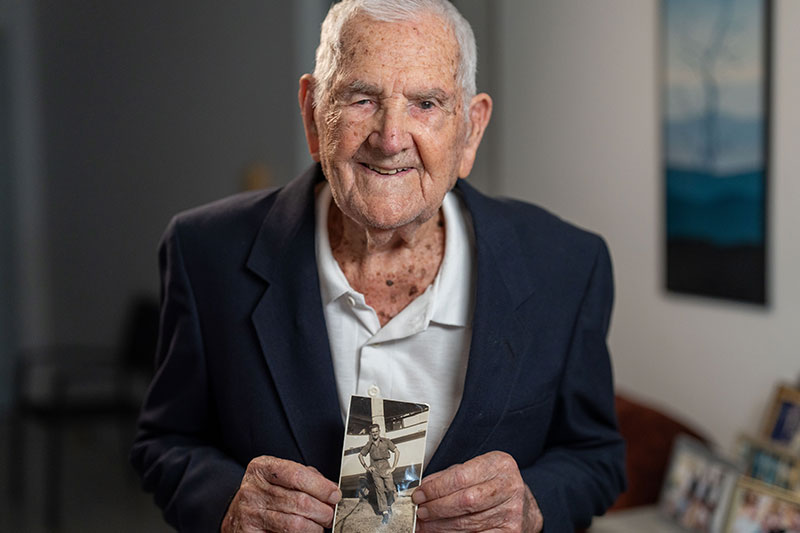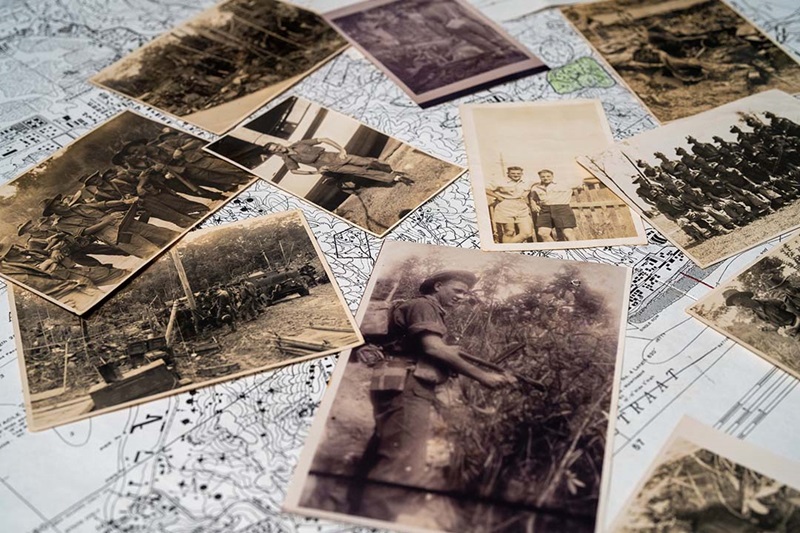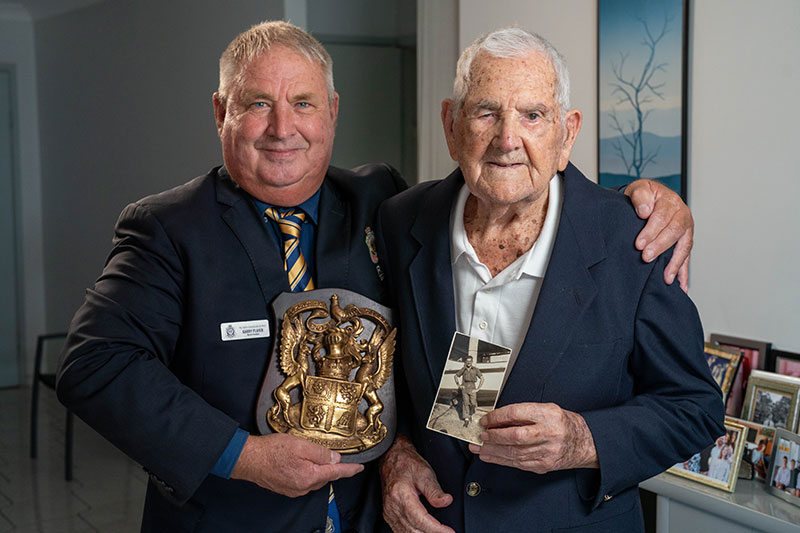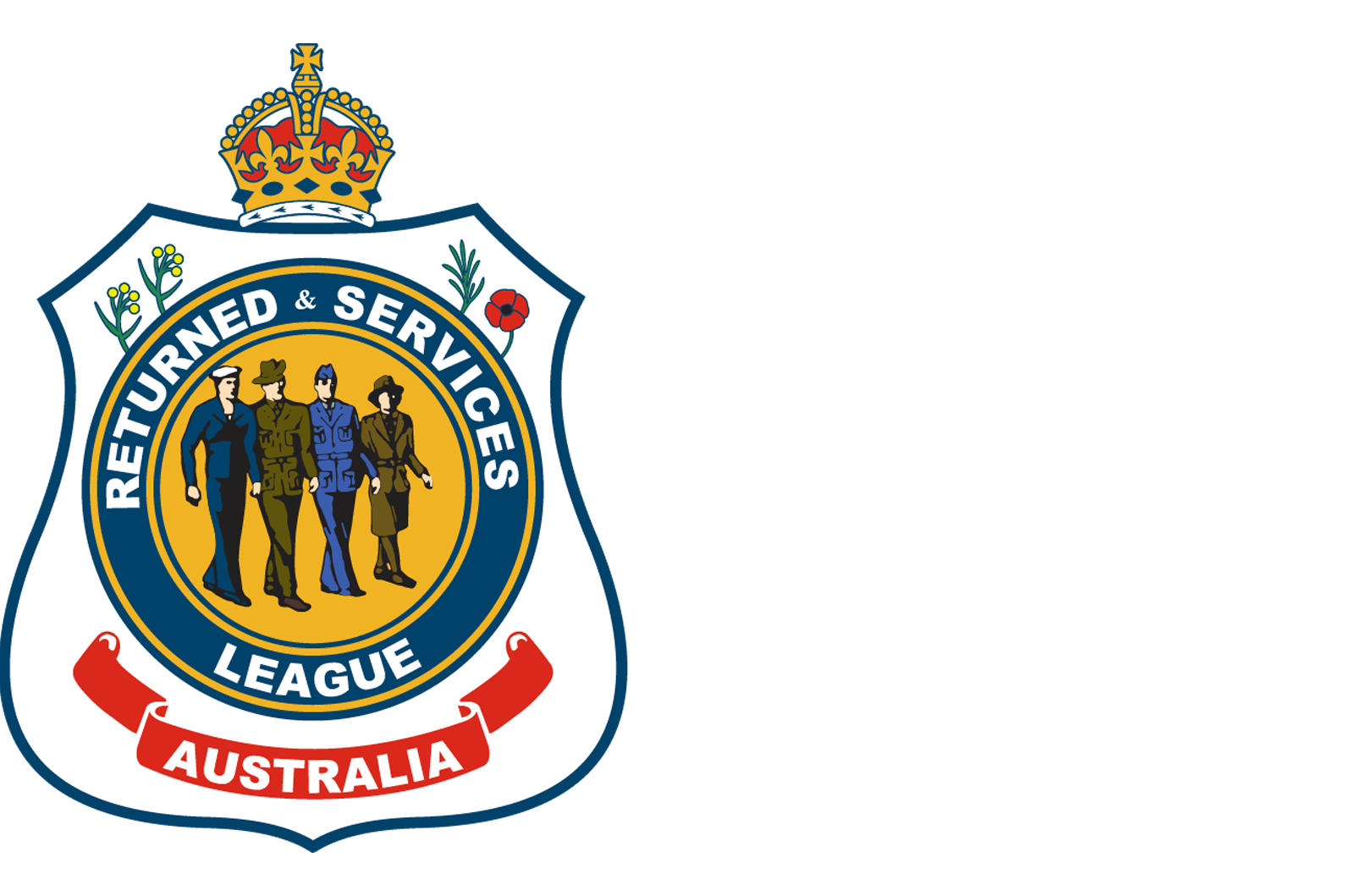15 May 2025
Battle in Balikpapan: Townsville WWII veteran shares his story
“The Army recruiter said, ‘You’re not 18 yet are you, mate?’ and I said, ‘Not quite’. He replied, ‘Come back when you are’,” the now-99-year-old World War II veteran recalls.
“So, on 9 March 1943, my 18th birthday, I was on their doorstep.”
After immediately quitting his wood manufacturing job at the time, Leslie was the first in his family to join the Defence Force.
“My two brothers were unable to join as Chuck was an asthmatic and Teddy was in a protected industry,” he says. “But then there was me, and I just said to my boss, ‘I’m going and that’s that’.”
WWII veteran Leslie Sinclair
Soon after, Leslie got the call to head to Brisbane and begin the recruitment process, which saw him train across multiple locations around Queensland and Sydney.
“I was then sent to the 2/33rd Battalion and finished up in A Company, 7 Platoon. I stayed there for the rest of the war,” Leslie says.
In June 1945, he boarded a ship to Morotai, which then took him to Balikpapan, a port on the southern coast of Dutch Borneo. Balikpapan was the site of the last major Australian ground operation of WWII, which was aimed at securing oil processing and port facilities.
Leslie’s battalion took part in subsequent operations that were concentrated around the Milford Highway, which ran roughly north out of the Balikpapan beachhead to the inland town of Samarinda.
The Australian advance out of the beachhead was considered and deliberate but saw some of the most difficult and costly fighting of the campaign.
In just three weeks, Leslie’s brigade suffered close to 50% of its casualties.
“The thing that stuck with you most was when you were in action,” Leslie says.
“I vividly remember when our Lance Corporal 2IC of the section was killed. I heard one shot, thought to myself, ‘Jeez, that was close’, then turned around and saw that Jack was down. We actually lost quite a few that day; that day was a bad one and stuck with me.”
By late July 1945, Australia had advanced 11km from the landing beaches and halted along the line of Pope’s Track that ran roughly east-west across the Milford Highway. Balikpapan was then considered secured, and Leslie’s battalion was withdrawn to rest.
Less than a month later, on 15 August, the Japanese officially surrendered, signifying the end of WWII. Each year, we commemorate this day as Victory in the Pacific Day, and 2025 marks its 80th anniversary.
Leslie during his time in the Army
“I remember the night well,” Leslie says, recounting the moment he found out that the war was over.
“There was a concert party on the beach starring English singer Gracie Fields, but many of us had to stay behind in the pits, just in case, so I volunteered to stay back.
“Then when the concert was over, I remember they were all coming up and yelling out, ‘The war’s over! The war’s over!’ and that was it.
“Once the word was out, they told us to not do anything silly and make no contact if possible. And then they brought us slowly back.”
Almost immediately, drafts of long-service personnel began returning to Australia, but Leslie and a few others had to stay back.
“We went out to a place called Kokopo Ramale Mission and stayed there for about three months,” Leslie explains.
“They had a Japanese POW camp there. They’d surrendered, but we were there to protect the people from the mission, including the nuns, in case there were any hostilities. We even experienced a few volcanic eruptions while we were there. Every time the volcano went off, we used to do a patrol to make sure the beach road and inland road were all clear.”
Reflecting on his service, Leslie says he’d do it again in a heartbeat.
“Oh, the mateship you had – you never forget them. I would serve my country again if I had to,” he says.
“There’s now two of us left from the battalion, so I think it’s important for people to know our story.”
North Queensland District President Garry Player with Leslie
Leslie has been a proud member of the Townsville RSL Sub Branch for nearly 35 years, a title that few hold in the Sub Branch. North Queensland District President Garry Player says it’s a privilege to have someone from Leslie’s era in the District.
“To have someone of his knowledge and experience in my District is so important. We may be from a different era, but we still had the same experiences; we missed the Army or Defence Force when we left and we faced the same challenges when we came back to civilian life,” Garry says.
“And now we can talk about it and hopefully improve the experience for the next generation of veterans coming through.”
Footnote: Additional information relating to battles were sourced from the Australian War Memorial.




